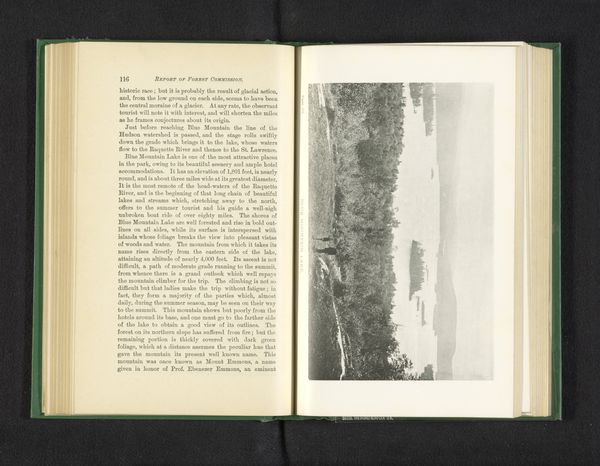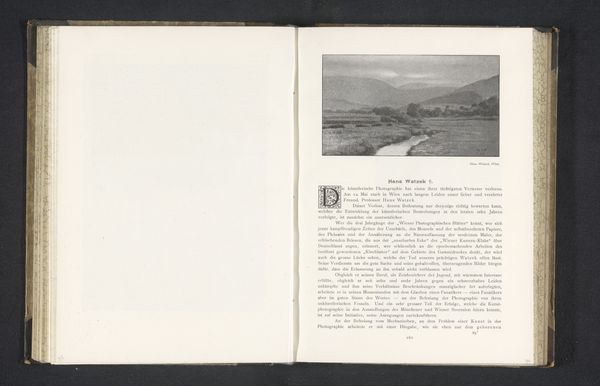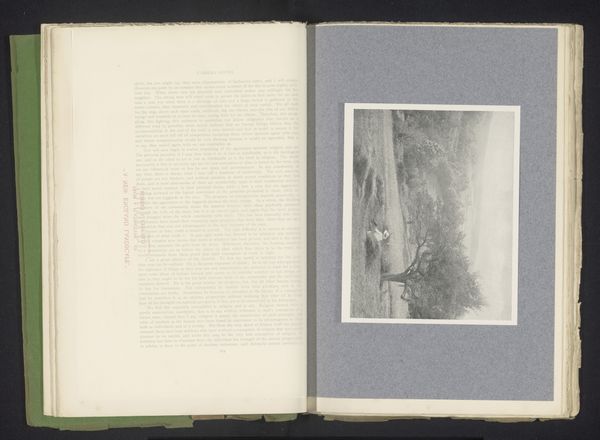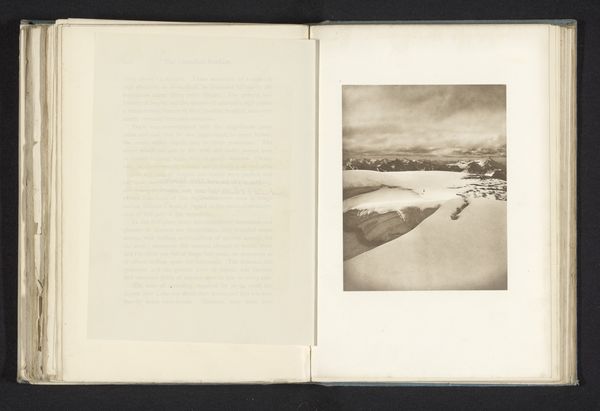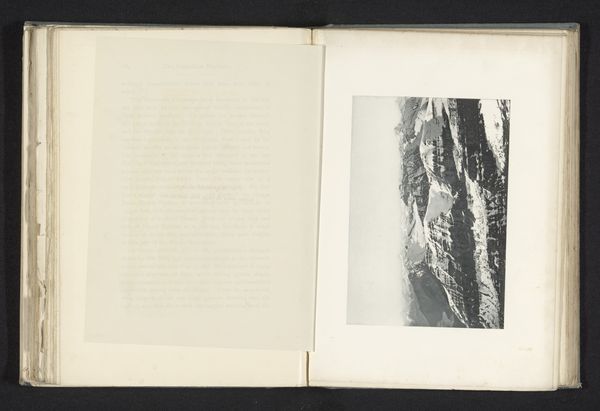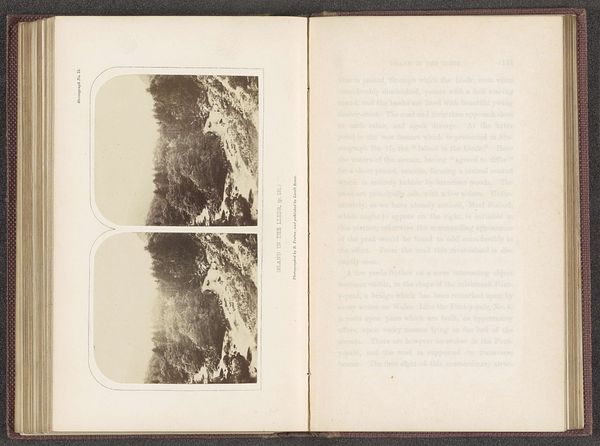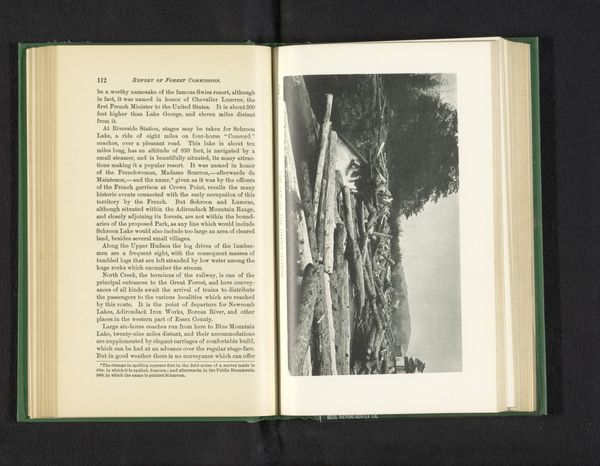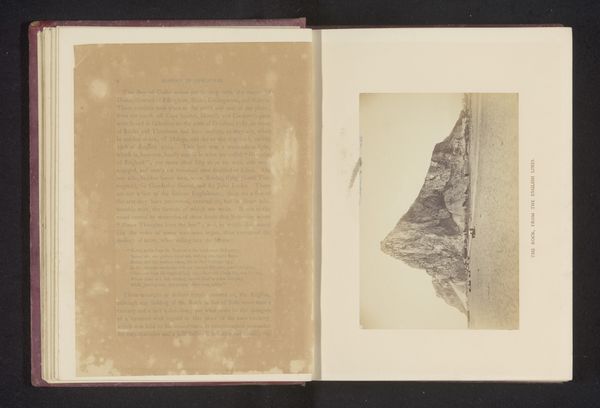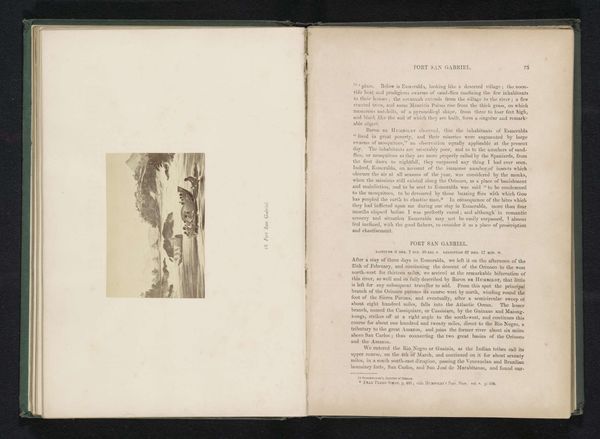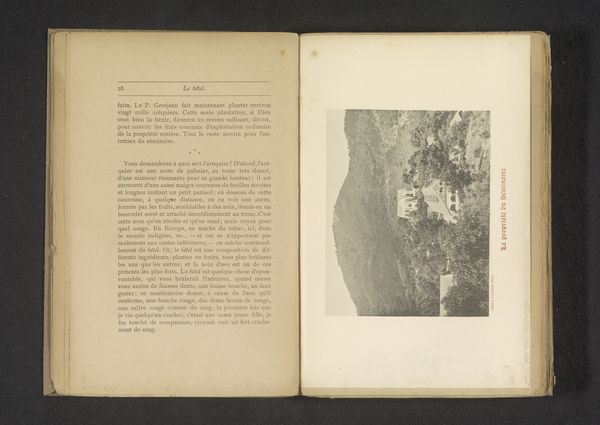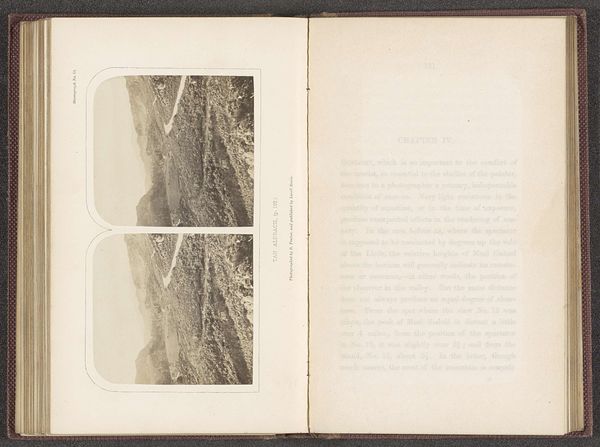
print, paper, photography
#
aged paper
#
still-life-photography
#
homemade paper
#
paper non-digital material
#
paperlike
# print
#
sketch book
#
personal journal design
#
german-expressionism
#
paper
#
photography
#
personal sketchbook
#
journal
#
historical font
#
columned text
#
monochrome
Dimensions: height 34 mm, width 108 mm
Copyright: Rijks Museum: Open Domain
Editor: So, this is a photographic print titled "Gezicht op een bevroren sloot" or "View of a Frozen Canal", made before 1899, and signed by "Br. Carstens." It’s… unexpected, isn't it? Seeing a photograph presented within the pages of what appears to be an open book, like an artifact. What's your take on how the context influences the art? Curator: That's a key observation. Placing photography within a book, especially one seemingly related to photographic techniques, immediately situates it within an institutional and intellectual framework. The book itself acts as a gallery, lending credibility and a certain level of sophistication to what might otherwise be considered a simple landscape image. The inclusion in "PHOTOGRAPHISCHE RUNDCHAU" also tells us that photography was starting to be looked at not just as documentation, but as a fine art with aesthetic and technical approaches being debated in writing, what do you make of that? Editor: Interesting! So, it's about the power dynamics in the art world - the book, the publishing context… Curator: Exactly. Who gets included, how is their work framed, what discourses surround it? The presentation almost *curates* our understanding. We're not just seeing a frozen canal, but a photograph that’s sanctioned, legitimized by this specific medium of display within a moment of social, cultural, and technological changes. Editor: I never thought about a book as a gallery before! Now that I understand a bit more of the cultural significance of publishing at that time, how can we compare it to what is considered important to art and media of our current digital age? Curator: The same political framing questions must be addressed no matter what media! Perhaps understanding it better using social structures, institutions, discourses, access… these same political and social undercurrents influence artistic perceptions and valuation, then and now. Editor: Wow, that is so true. Thanks! I am always excited to view my surroundings with a more critical historical viewpoint. Curator: A lens for re-viewing - and re-interpreting our media consumption experiences.
Comments
No comments
Be the first to comment and join the conversation on the ultimate creative platform.
